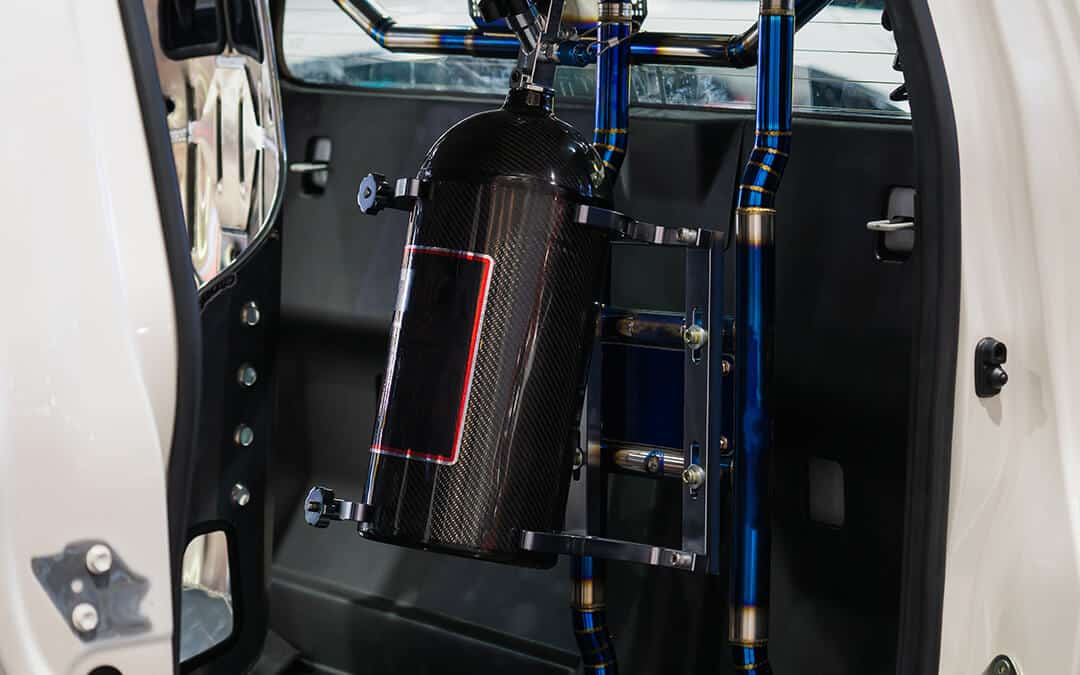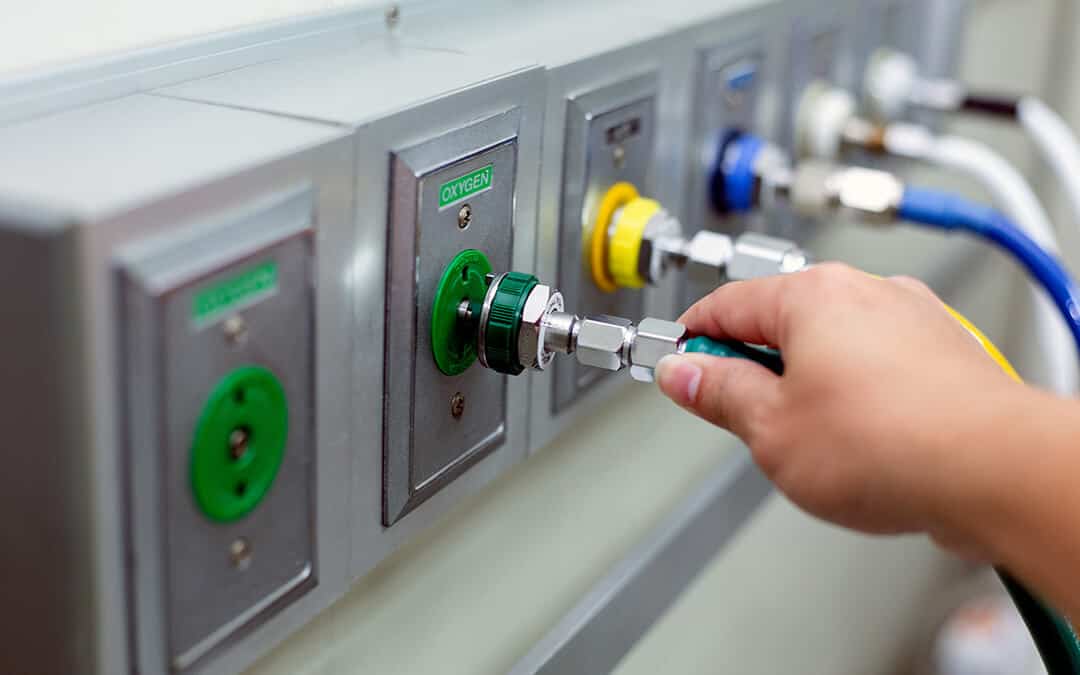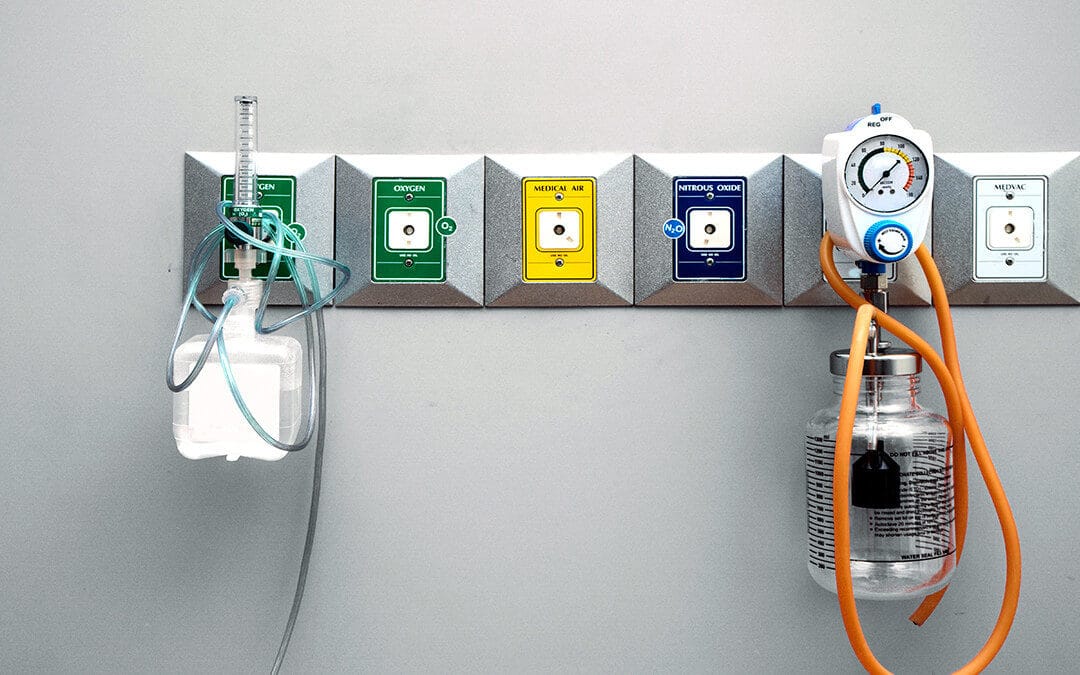There are two types of nitrous oxide-oxygen delivery systems: portable and fixed (unmovable). Both of these types of systems deliver a maximum of 70% nitrous oxide and 30% oxygen, delivering to your patients, at minimum, 9% more oxygen than they can get from the air. As you know, this winning combination of oxygen and nitrous oxide, when inhaled, can help you to better manage not only your patients’ pain levels, but their anxieties as well.
Which system is best for your dental practice? Well, your answer depends on the unique needs of your office. Here are the basic facts you need to know about the two types of nitrous-oxide systems that can be delivered to your doorstep.

Portable Tanks (on Wheels)
Portable tanks that deliver nitrous oxide-oxygen are basically tanks on yoke stands. These stands can be wheeled around your office as needed. They can move from dentist to dentist as different procedures require. So, if you have a more flexible or malleable office space in which different procedures are performed in different locations, this might be the best option for you. The portable tank comes to you, not the other way around.
Fixed Tanks (There’s No Moving This System)
On the other hand, fixed-tank systems that deliver nitrous oxide-oxygen are connected with a manifold system that can serve several dentists or dental procedure rooms at once. This may be the better option for a busier office that has dental procedures happening simultaneously. With a fixed tank, the dentist must perform the procedure within range or reach of the delivery system. So, you go to the tank and not the other way around.

Both Options Have Safety Built In
Additionally, according to the American Dental Association1, there are safety margins built into both of these options. So, one isn’t necessarily safer than the other. They’re just different. There are 12 or more delivery system safety features, both audio and visual, that are built in to protect both the operator and the patient. While safety features exist, the ADA cautions, as always, to practice proper patient safety protocol:
“Practitioners should know how to maintain these features and to immediately remove the patient’s face mask to allow for breathing of room air when any of these safety features is suspected of failing.”
If you do decide to pursue one of these options, or you already have one or both options in place, the ADA recommends the adoption of appropriate work practices and recommendations from the Council on Scientific Affairs.
To learn more about CalOx’s nitrous oxide (laughing gas) for dental practices, contact us today.
1. https://www.ada.org/en/member-center/oral-health-topics/nitrous-oxide
